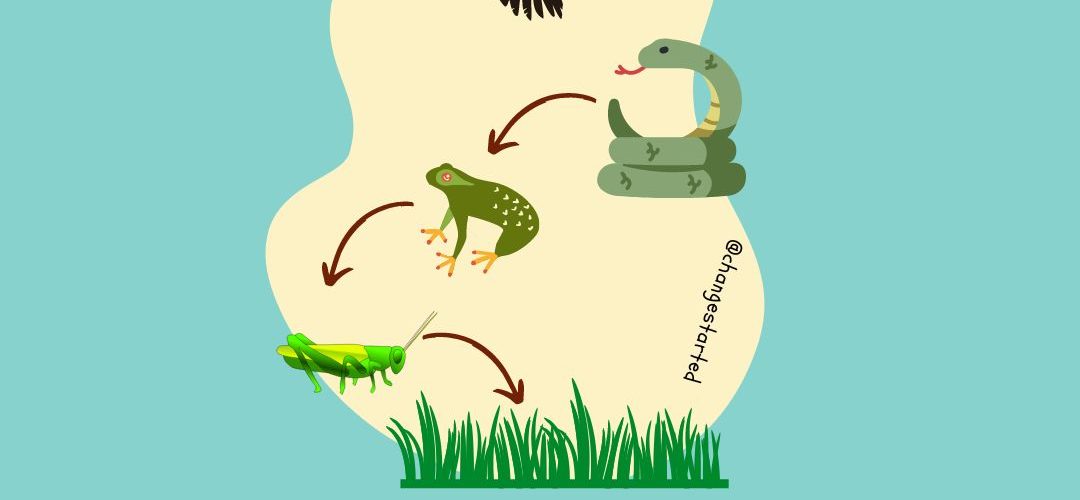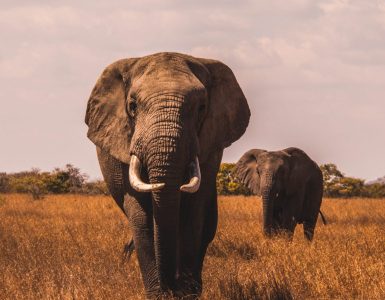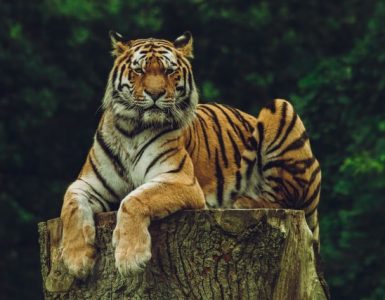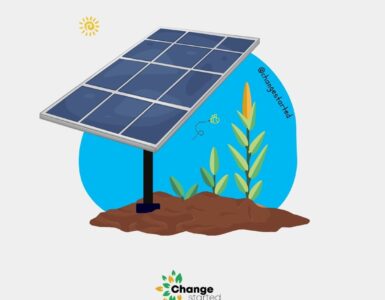A grasshopper eats grass.
A frog eats the grasshopper.
A snake eats the frog.
An eagle eats the snake.
The eagle when dies, the body gets decomposed by fungi and the nutrients are added as nourishment for the grass.
This is a simple food chain explained but did you know our ecosystem consists of multiple food chains intricately intertwined to stabilize the ecosystem?
The unique interaction and relationships involved between different animals and their nutritional needs help in the transportation of energy and are collectively known as the food web.
The food web plays a crucial role in stabilizing the ecosystem by providing a regular medium for the reabsorption of the nutrients transported. However, in today’s world, the food web is frequently disrupted and it is not uncommon to witness the catastrophic effects of the disruptions caused.
Understanding the food web
Before we understand the causes and effects of the disruptions to the food web, let us first understand the concept of the food web.
A food web can be described as the umbrella term used for all the food chains present in the ecosystem. In the food web, the organisms are divided into categories known as trophic levels. These trophic levels can be divided into
- producers (also known as autotrophs; these make their own food) – for example, plants and algae.
- consumers (occupying the second trophic level, the consumers can be categorized into primary, secondary, and tertiary consumers) – for example, herbivores, omnivores, and carnivores.
- decomposers (occupying the last trophic level, the decomposers consume the remains of an organism and help in transporting the nutrients back to the others – for example, fungi and bacteria.
The food web comprises several food chains which can range from simple food chains involving just a few organisms to more complex, organized ones as well.
In many cases, this relationship is intertwined and extremely complex, like a grasshopper can be eaten by frogs and birds, and then both of these animals can be eaten by a snake.
Understanding the food web helps in knowing the concept of biomass i.e., the energy present in living organisms. As we pass each trophic level, the biomass decreases, therefore you will observe the producers are more abundant than consumers. Since the food web comprises different biomass chains, the ecosystem biomass can decline if any one of the chains is threatened.
Disruption of a food web

Food webs are essential for the health of the planet, but unfortunately, there have been several factors that lead to disruptions of the food webs.
In recent times, factors like acid rain, air pollution, climate change, hunting, deforestation, human greed, illegal hunting, littering, mining, natural causes, overpopulation, soil pollution, and water pollution have led to disruptions in the food webs.
These factors have disrupted the delicate balance in the ecosystem causing an imbalance in environments, endangerment of flora and fauna, biodiversity loss, migration, social tensions, food scarcity, starvation, and poverty.
The rampant hunting of a particular species endangering them causes imbalances in the ecosystem. The food chains are interconnected therefore threatening a particular species affects the food source for other species as well. If the particular species becomes extinct, it can lead to food scarcity for many animals, which can further cause migration or even extinction in some cases.
Disruptions of food webs not only affect the fauna of a region but causes setbacks for humans as well. It can lead to poverty and starvation for the local population.
Take the case of bees, if these tiny creatures are responsible for producing many fruits and vegetables that humans consume. If climate change, unsustainable agriculture, or any other factor results in the loss of bee populations, imagine the consequence.
Wrapping Up
Disruption of food webs is often not considered important as animals tend to develop more than one feeding pattern and are included in multiple food chains. However constant disruptions can lead to irreparable damages.
Countries all across the globe should work together to find effective solutions to this problem. Efforts should be made to protect natural habitats from destruction. Protecting species, preventing illegal hunting, adjusting to new consumption behaviors, limiting the production of waste, mitigating global warming, and reducing pollution are just some of the basic measures that should be incorporated by the countries.
We should raise awareness among young and old alike and educate the masses on the importance of the conservation of food webs. Just tweaking certain habits can help in saving ecosystems in the long run and provide a sustainable environment for the upcoming generations.






Add comment